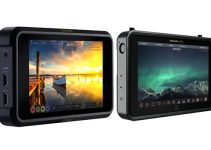With the advancements in ever-evolving filmmaking technology, gimbals and steadicams have changed the way we shoot smooth, stable footage forever. Despite all the attention given to companies like DJI and Zhiyun for their ubiquitous and intuitive gimbal stabilizers, many have forgotten that it’s still possible to achieve extremely steady footage without those devices.
In fact, with the tips and tricks outlined by filmmaker Nigel Barros in the video below, you can get amazingly smooth video even when shooting with bare hands.
For starters, one of the most basic things you can do to capture smooth video is to use a lens that has built-in image stabilization. Needless to say, Sony and Canon are two of the most popular camera and lens manufacturers in that regard, both with reputable and highly-praised IS-equipped lenses.
You may also want to consider using an IS-equipped lens with a camera that has in-body image stabilization integrated within. An example of this would be pairing the Sony E PZ 18-105mm f/4 G OSS lens with an IBIS-equipped camera like the Sony A6500.
If you don’t have any lenses that feature image stabilization, it’s best to use then the widest lens you own – at least 35mm or wider. Odds are you’ll notice less of the micro-jitters associated when shooting handheld at the suggested focal lengths.
When it comes to holding your camera, your goal should be to keep the unit away from your body as much as possible. This means that you should be using somewhat loose grip – enough to hold your device but not too loose so that it could easily fall.
Furthermore, you could try to keep your arms out with your elbows wide, away from your body. This way, you’ll be able to create an improvised shock mount system with your arms that will absorb the unnecessary shake caused by your natural movement.
Another tip is to keep your knees bent and move your feet with a heel-toe progression as you’re walking with your camera. Keeping yourself lower to the ground while moving slowly will also reduce the amount of shake present in your video. Meanwhile, do your best not to pause in between your steps, as frequent stopping may easily translate into unwanted camera jitter in your footage.
When hand-holding the camera, it’s also a great idea to be moving on wheels, whether it be by sitting in a wheelchair or riding a skateboard or even a hoverboard. Just make sure that if you opt for any of these options you and your crew members are safe.
In terms of camera settings, Barros recommends shooting in slow motion at 60fps, if possible. However, if you’re not going for the slow motion aesthetic, a popular alternative would be to film in 30fps and slow down your footage to roughly 85% in post.
Lastly, to further improve the fluidity of your camera’s motion, you can always use post-production stabilization plugins, such as Premiere Pro’s Warp Stabilizer. Reducing the smoothness to around 12-13% on those occasions should yield some decent results.
Ultimately, even though camera technologies continue to advance, it’s always great to have such old-school techniques on hand, just in case you find yourself in a situation when you need to improvise, or you simply need to get the shot right away.
[source: NigelBarros]
Disclaimer: As an Amazon Associate partner and participant in B&H and Adorama Affiliate programmes, we earn a small comission from each purchase made through the affiliate links listed above at no additional cost to you.



